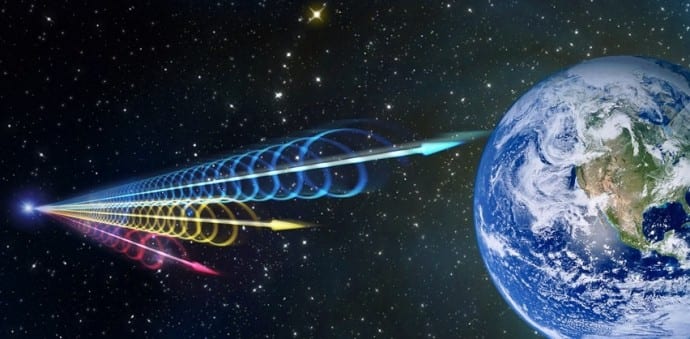Scientists hear huge and strange fast radio bursts from deep space
Researchers claim to have detected repeating strange radio signals from unknown source outside our galaxy. These short-lived signals are known as ‘fast radio bursts’ (FRBs) are very rare single bursts of radio waves originating billions of light years away, explains Popular Science.
The finding adds to other strange discoveries about the FRBs as to where exactly in the universe they are coming from and what might be causing them. These mysterious radio blips from deep space have puzzled scientists since the first one was discovered in 2001. Last year, scientists said that some of the messages appear to be coming in a pattern — one that could even be created by alien technology.
FRBs last just one to 10 thousandths of a second, which were first detected just 15 years ago by scientists using a radio telescope in Australia. Since then, just 17 have been detected around the world, and all of them seemed to be one-offs, up until now, and none of them ever repeat, reports the Verge.
According to a paper published this week in Nature, now researchers at Cornell University say they have discovered repeated 10 millisecond-long FRBs after sifting through archive data caught by the Arecibo telescope in Puerto Rico.
Scientists used to think FRBs were caused by “cataclysmic events,” such as neutron stars colliding with each other and sending a shockwave of energy across the universe. But the new findings show that the source of the energy isn’t being destroyed, since they send out more than one burst.
Senior researcher Shami Chatterjee says in a press release that “This research shows for the first time that there can be multiple FRBs from the same place in the sky – with the same pulse dispersion or distance.
“Whatever produces the FRB can’t be destroyed by the burst, because otherwise, what would produce the next pulse?”
And the mystery deepens: “We’re showing that whatever battery drives FRBs, it can recharge in minutes,” said James Cordes, an astronomy professor at the university. “The energy of the event becomes very problematic.”
Professor Cordes added: “Only a few astrophysical sources can produce bursts like this, and we think they are most likely neutron stars in other galaxies.”
Researchers hope to next identify where the FRBs are coming from in order to figure out what they are coming from, and they will be helped by three huge radio telescopes that start operating next year.
The findings have been released days after another research team claimed to have traced radio waves back to its source for the first time. However, questions have been raised on the findings by other researchers who believe the signal could be related to activity linked to a supermassive black hole.

